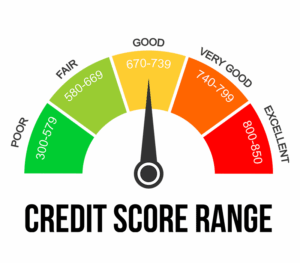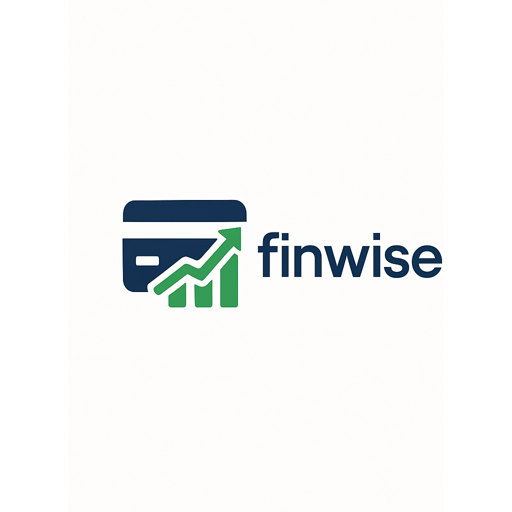Introduction to Investing for Beginners in 2025
How to Begin Investing and Start Growing Your Wealth in a New Economy
While investing has long been at the heart of long-term financial success, the investing world is changing faster in 2025 than ever before. From new technologies and interest rates to new investment platforms, beginners have more tools — and hurdles — than any generation before them. Whether you’re beginning with $100 or ticking closer toward retirement, knowing the basics can help you avoid typical pitfalls and capitalize on today’s rare opportunities.
Here is the ultimate guide for anyone considering beginning to invest in 2025.

Easier Than Ever to Invest, but Harder Than Ever to Find Value
In the interim, the purchasing power of idle money is further eroded by inflation. By 2025, conservative estimates suggest that the cost of living outpaces average savings account returns. Just socking money away won’t get you wealth. Investing enables your money to grow — and outpace inflation — with the opportunity to build wealth over time.
Investing has never been more accessible, thanks to technological advances and regulatory changes. Apps, robo-advisors and online brokerages have all made it incredibly easy to get started with very little money and absolutely zero clue.
Create Your Financial Plan
Define your goals before they invest. Are you going to buy a home in five years? Planning for retirement at 30? Looking for passive income?
Let your timeline and risk tolerance drive your investment strategy:
Shorter-term (0–3 years): Safer options may be high-yield savings accounts, money market funds or short-term bonds.
Medium-term (3–10 years): Combine some level of risk and return with a mix of ETFs (exchange-traded funds), dividend-paying stocks and bonds.
Long term (10+ years): You have room to take more risk — think growth stocks, index funds or even alternative investments like REITs and crypto (with caution).
Create a Solid Financial Base
Investing can’t be the priority before you’ve handled the basics:
Emergency Fund: Save 3–6 months worth of living expenses in a liquid, available account.
Pay Down High Interest Debt: If you are in credit card debt that’s 20%, you’re going to get a bigger return investing your money in paying that off in full before even considering investing.
Know Your Budget: Knowing how much you can invest every month without impeding on your everyday expenses. Cases, parts and mounts.
Credit cards with cashback or rewards can help you make some extra money for investments if you use them carefully.
Study Up on the Investments of 2025
The investment universe today is more vast and dynamic than at any time in the past. Here are the big picture categories you will want to know about as a beginner:
Stocks
If you own shares in a company, you own a part of a company. Stocks have the potential for growth, but also the potential for volatility. The year is 2025, and you can invest in a company like Apple or Tesla by spending as little as $5.
ETFs and Mutual Funds
These funds combine money from a large number of investors to purchase groups of stocks or bonds. ETFs, which trade like stocks, are a great way for beginners to get exposure to the broad market, without needing to pick individual companies.
Bonds
Bonds are loans you make to governments or companies. They are more stable than stocks, but returns are lower.
Real Estate Investment Trusts (REITs)
REITs allow you to invest in real estate without owning property. They pay dividends and can get you exposure to commercial or residential markets.
Cryptocurrency
Bitcoin and Ethereum, digital assets that carry an air of speculative investing, nevertheless are also viewed by some as long-term stores of value. In 2025, strictly regulated ETFs and blockchain-enabled platforms have helped making investment in crypto more mainstream.
Select the Right Platform
There are so many ways to begin investing, depending on how you’re able to do so:
Robo-Advisors (such as Betterment or Wealthfront): They use algorithms to invest your money according to your goals and risk tolerance.
Brokerage Accounts (Fidelity, Schwab, Robinhood, are all examples): Your basic service here that offers self-directed trading with these low fees, and access to stocks, ETFs and options as well.
Mobile Apps (such as Acorns or Stash): For newbies, they let you start investing with as little as $1 through round-ups or set-it-and-forget-it recurring deposits.
ESFs (such as 401(k)s): If available, these plans provide tax benefits and may include employer matching (free money — not something you pass up).
Seek out platforms with low fees, intuitive interfaces and teaching resources.
Know Risk and Know Diversification
The people who lose the most are generally the newbies who are invested 100% in one stock or one type of asset. Diversification is a risk-reducing strategy that involves mixing a wide variety of investments within a portfolio.
For example, rather than purchasing $1,000 worth of just one tech company, you might opt for an S&P 500 ETF, which grants you access to 500 different companies from a variety of sectors.
And don’t forget your risk tolerance. If you freak out every time the market dips, you might want to dial it down.
Take Small Baby Steps And Be Consistent With It
You don’t need thousands to start investing in 2025. Zero minimums are common, and most platforms take automatic, recurring deposits. The key is consistency.
Dollar-Cost Averaging: Invest a set amount at regular intervals (i.e $100/month). This mitigates the effects of short-term volatility.
Reinvest Dividends: Some platform give you the option to reinvest dividends automatically as a way to enhance your compound interest.
Monitor Your Strides: Portfolio trackers or budgeting apps can help you keep tabs on how your investments are performing.
Learn the Tax Rules
There are tax consequences of investing, especially when you receive dividends or sell investments at a gain.
Taxable Brokerage Account: Profits will be subject to capital gains tax. Long-term gains (more than one year) are taxed at more favorable rates.
Tax-Advantaged Accounts: Contribute to IRAs and 401(k)s to lower your taxable income, and pay taxes only when you retire.
Crypto Taxes: Uncle Sam is tightening the screws on crypto reporting. Use tools such as CoinTracker or Koinly to remain compliant.
Common Mistakes to Avoid
Pursuing Hot Stocks or Trends: Don’t buy into hype, buy into value.
Overtrading: Regular buying and selling runs up fees and taxes.
Forgetting About Fees: Even a one-percent fee can deal a blow to long-term returns.
Market Timing: Anyone who tries to time the market will get it wrong.
Lack of Research: Know what you are investing in and why.
Making An Investment In Your Future
Invest in 2025’ is for everyone with an idea, a goal, and an appetite for learning, not just Wall Street insiders. There are more tools than ever available today to help make it easier to start building wealth, but there’s no guarantee of success. Patience, knowledge and consistency are your friends.
Be it a fresh portfolio funded with credit card rewards or a retirement account contribution, each action adds up to long-term growth. Start today — and put your money to work for you.
Our Post

High Interest Rates, Credit Cards and the U.S. Consumer: What to Know in 2025
The Note: How Decelerating U.S. Economic Growth Affects Using Consumer Credit


